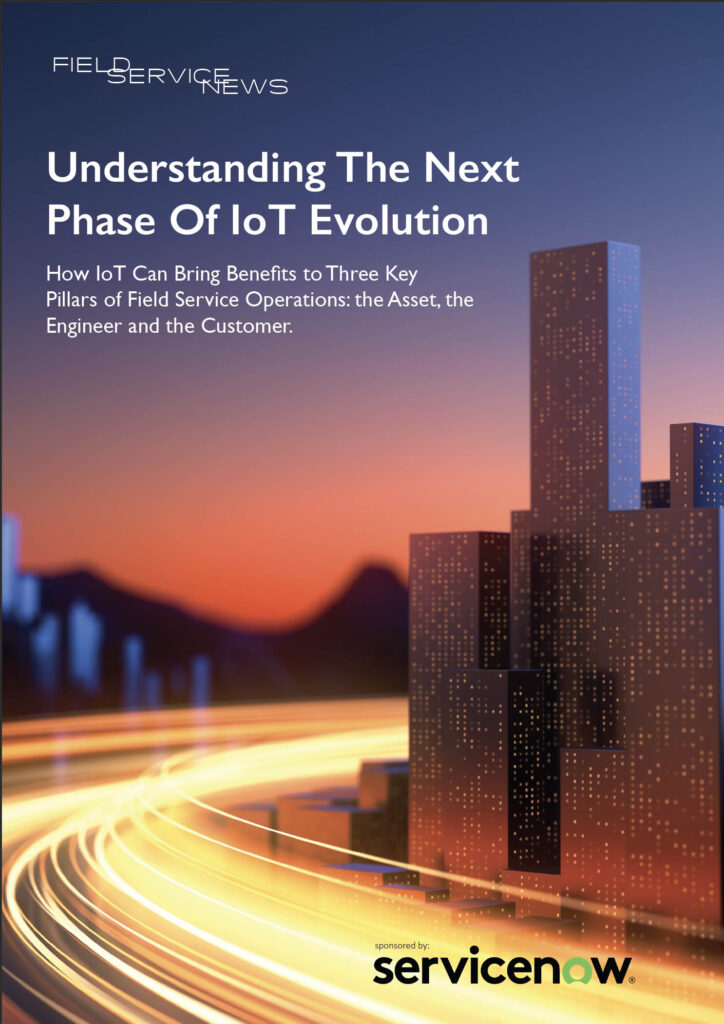Connected Field Service:
IoT and Improving Workforce Management
Having identified how embracing IoT from an asset management approach can benefit field service organizations, let us look at how such an approach can bring significant benefits to the next of our three pillars of field service operations – the field service workers themselves
An Improved Work/Life Balance:
When the millennial generation first came into the workforce, much was made about the fact that this was the first generation that, in consistent polls, had placed personal values such as gratification and happiness above pure financial remuneration. While before this point, the positive benefits of a good work/life balance were important for employers to consider. Now they are essential if a company is going to be an attractive destination for future employees.
However, the traditional life of the field service engineer or technician can be hard. Long hours on the road and often in stressful environments can take their toll – perhaps that is why so many field service companies have struggled for so long to find a reliable source of recruits to replace an increasingly ageing workforce. However, for those field service organizations that embrace IoT, the engineer’s working day can be radically different.
Firstly, the engineer is likely to be far more informed when they arrive on site. Data from the asset itself will already have been analyzed (either by AI or a human in a dispatch center) to identify the most likely fault as per the example in our previous feature in this series.
Similarly, with predicted fault diagnosis, the relevant parts required for a firsttime fix can already be with the engineer ahead of the service call.
In this situation, our engineer will be as well prepared as possible as greater amounts of data mean more effective triage and fault diagnosis. This includes health and safety factors, as again, the better prepared our engineers are, the safer the environment they are working in.
This is hugely important as, by definition, the engineer’s environment is not one that the service organization can ever have complete control over. Hence, every slight improvement in this area is essential.
Also, as this maintenance has been proactively scheduled ahead of failure, the service call is likely scheduled for a convenient time for the customer. This alone can allow the engineer the space and time to complete the task without interruption. All in all, such an approach provides our engineers with a far less stressful environment.
Let us also consider the engineer’s utilization rates – one of the most critical KPIs within field service management. Scheduling jobs in advance and ahead of failure gives the scheduling team the opportunity to potentially group jobs in a more effective route across a geography. This is, of course, a win-win for both the engineer and the field service organization themselves as less time behind the wheel is good for the engineer, and more productivity from the field workers is good for the company.
Finally, once again, let us consider the continuing trend of remote service and guided self-service.
The introduction of such an approach to service delivery offers further options when exploring how this can benefit the workforce.
As we mentioned above, the ageing workforce is an issue many field service companies face currently. Still, the opportunity to work from a central location (or even from home) to provide expertise remotely may be an excellent route to keeping these seasoned engineers in the workforce for longer.
Similarly, it could be an approach to offer a rotation of delivering remote services amongst your field service engineers. This approach could provide variation in the role and a strong balance between the flexibility of working from home and the freedom many field workers enjoy by working on the road.
Want to know more? In the next feature, we will be discussing connected field service looking specifically at how IoT can improve customer success. Don’t want to wait? Field Service News subscribers can access the full white paper ‘Understanding The Next Phase Of IoT Evolution’ on the button at the top of this article.
This white paper is sponsored by ServiceNow

![]() Data usage note: By accessing this content you consent to the contact details submitted when you registered as a subscriber to fieldservicenews.com to be shared with the listed sponsor of this premium content ServiceNow who may contact you for legitimate business reasons to discuss the content of this white paper.
Data usage note: By accessing this content you consent to the contact details submitted when you registered as a subscriber to fieldservicenews.com to be shared with the listed sponsor of this premium content ServiceNow who may contact you for legitimate business reasons to discuss the content of this white paper.


